Kichijoji, Kishiwada Danjiri, Jidai Matsuri and Chichibu Yomatsuri: autumn festivals in Japan
- September 12, 2024
- 4 min
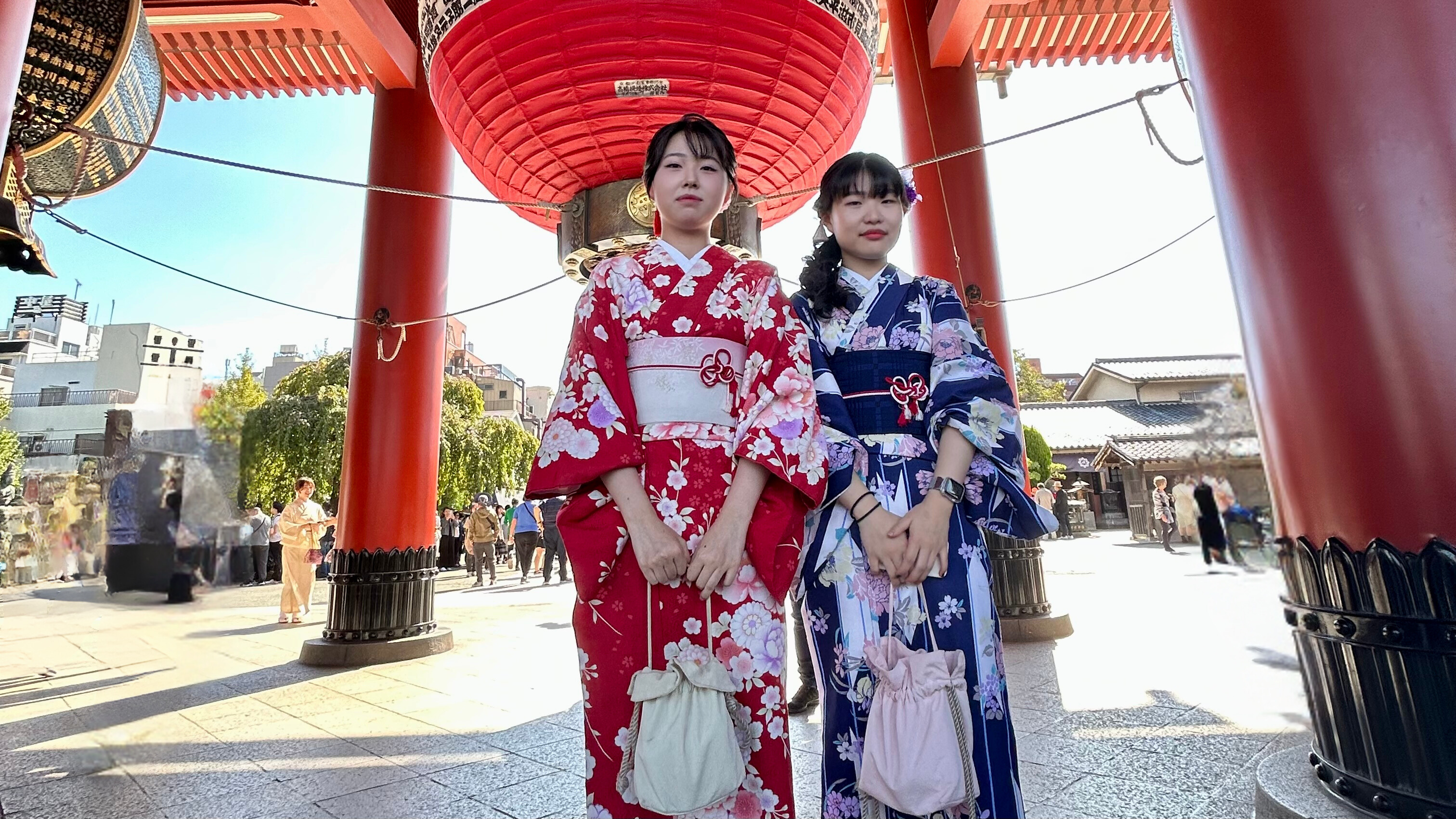
Autumn colors and traditions: the magic of the Kichijoji festival
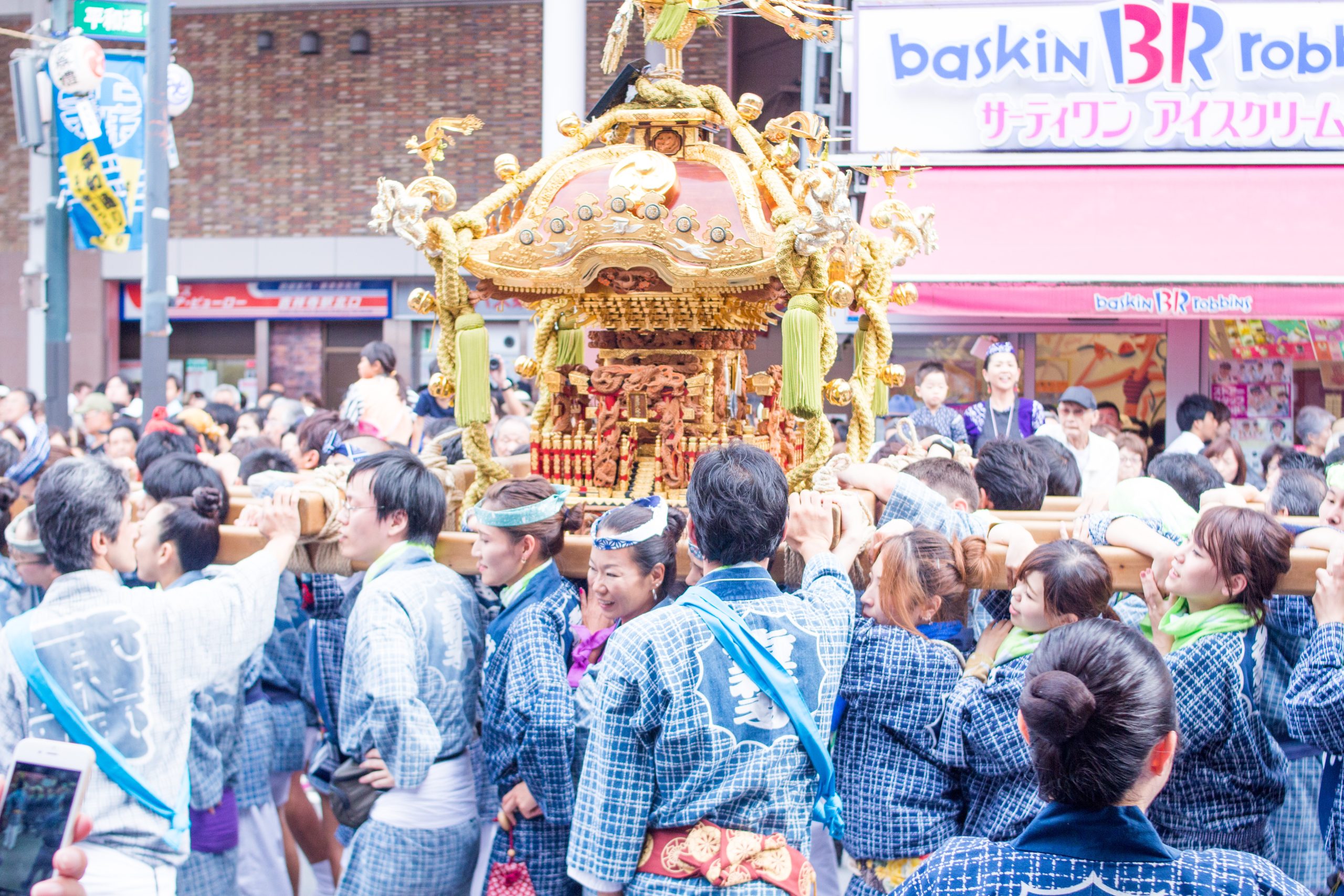
The Kichijoji Autumn Festival takes place every year in mid-September in Tokyo’s vibrant Kichijoji district. This festival is a wonderful example of how tradition and modernity coexist harmoniously in urban Japan. The event features a series of celebrations that highlight local culture and community energy, attracting residents and tourists alike.
The heart of the festival is the procession of the mikoshi, small portable shrines that are carried through the streets of Kichijoji. The mikoshi represents local deities, and swinging and carrying it is a sacred act that allows the gods to temporarily visit the community. During the procession, participants wear traditional clothing such as the happi (a ceremonial jacket), and the atmosphere is enlivened by singing and drumming, creating a lively and cheerful contrast to the ordinary hustle and bustle of the city.
In addition to the procession, the Kichijoji Autumn Festival offers a variety of activities, including live musical performances, traditional dances and stalls selling street food and typical Japanese sweets. The area around Kichijoji Station is transformed into a large outdoor festival, where visitors can enjoy specialties such as takoyaki, yakitori e taiyaki, immersing themselves in the local culture.
Another interesting aspect of the festival is the combination of modern and traditional elements. In addition to religious celebrations, there are performances that appeal to the younger generation, with a lively fusion of ancient traditions and contemporary trends.
Kishiwada Danjiri Matsuri: the chariot race. Pure adrenaline in the heart of Osaka.
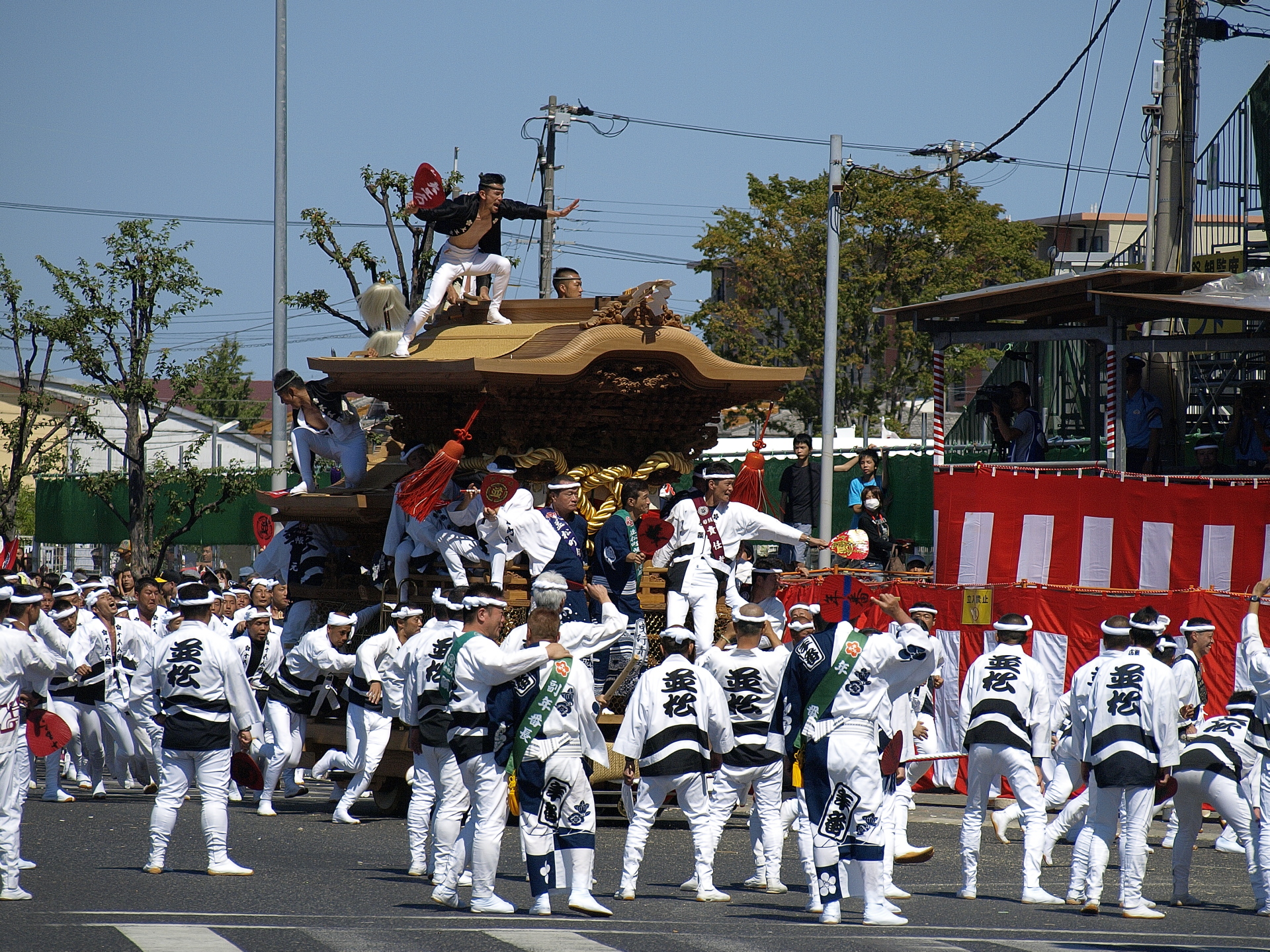
The Kishiwada Danjiri Matsuri is one of the most exciting and intense festivals in Japan, celebrated in Kishiwada, Osaka Prefecture, every September. This event has roots dating back to the Edo era (1603-1868), when feudal lords held the festival to pray for an abundant harvest and prosperity for the community.
The heart of the festival is the spectacular running of the danjiri, large, finely carved and decorated wooden floats. Each district in Kishiwada builds its own float, and the festival sees teams from the various districts compete with each other to drag these massive floats through the city streets at impressive speeds. The danjiri, which can weigh up to 4 tons, is pulled by dozens of men through tight turns, requiring perfect coordination and considerable physical strength.
One of the most characteristic aspects of the festival is theadrenaline experienced during the race. Despite the dangerous nature of the event, which has caused injuries in the past, participants boldly launch themselves into the crowded streets, showing off a dedication and enthusiasm that make the festival unique.
The floats themselves are works of art: they are hand-carved and adorned with sculptures representing deities or symbols of good luck. During the festival, the main float is topped by a dancer who, balancing on the roof of the danjiri, performs acrobatic choreography that captivates spectators.
In addition to the chariot races, the Kishiwada Danjiri Matsuri is also an opportunity for the community to come together and celebrate with traditional food, drinks and entertainment. The atmosphere is joyful and energetic, making it a must-attend event for anyone visiting Osaka in the fall.
Jidai Matsuri: a journey through time on the streets of Kyoto.
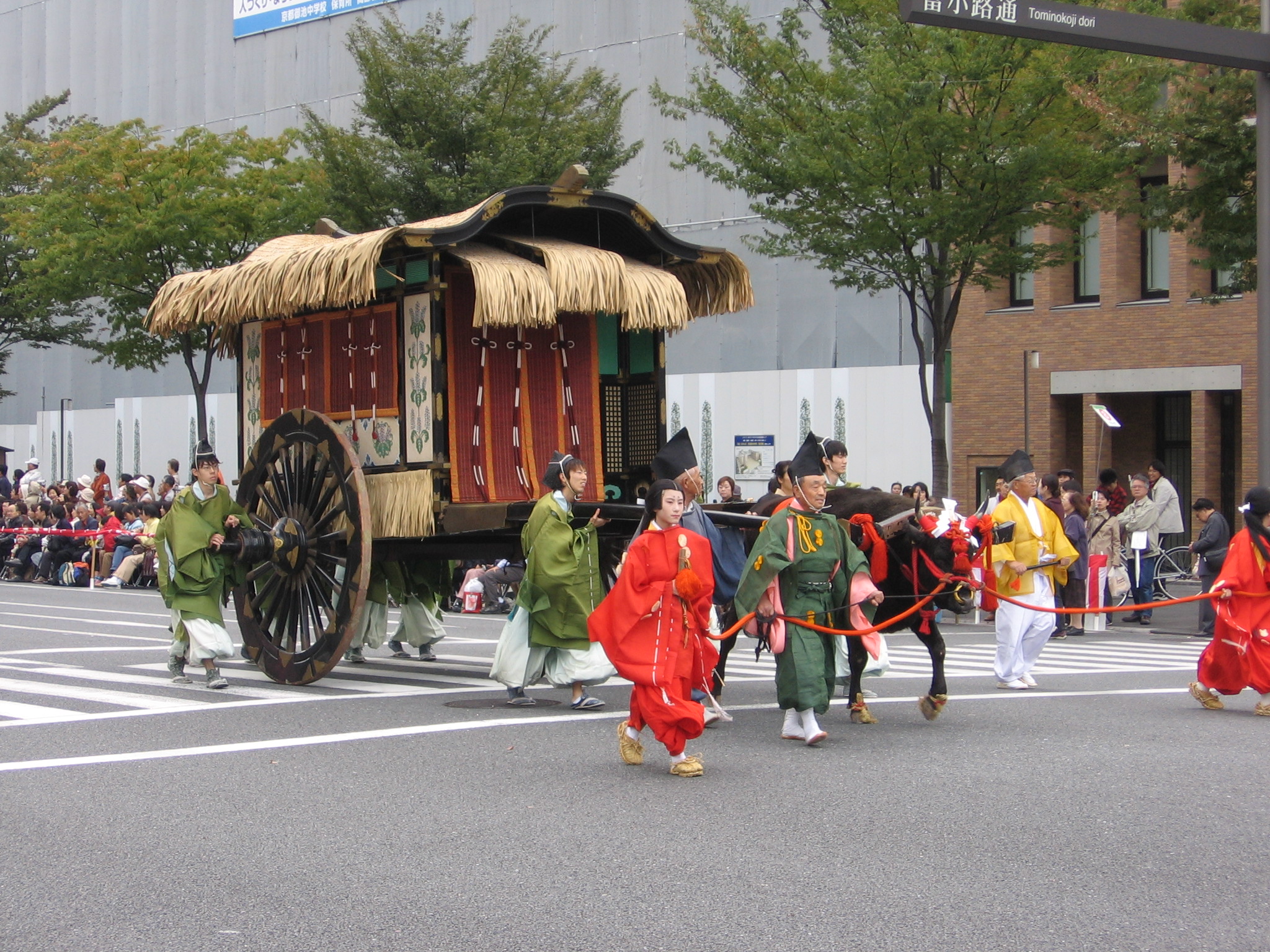
The Jidai Matsuri is one of Kyoto’s most iconic festivals, held annually on October 22. This festival celebrates the city’s rich history with a spectacular parade through downtown, offering a glimpse of Japanese culture through the ages. The Jidai Matsuri, or “Festival of Ages,” is a commemoration of the transfer of the imperial capital from Kyoto to Tokyo in 1868, and is a tribute to Kyoto’s glorious history as the capital of Japan for more than 1,000 years.
The heart of the Jidai Matsuri is a long and majestic procession of about 2,000 participants, which winds its way from the Kyoto Imperial Palace to the Heian Shrine. Participants wear traditional costumes representing every era of Japanese history, from the Heian period (794-1185) to the Meiji Restoration in 1868. The parade stretches for about two kilometers and lasts for several hours, offering visitors an extraordinary visual spectacle.
The procession is divided into sections representing various historical eras. Each group is organized to reflect the clothing, weaponry and lifestyle of the period they represent, and the sections feature prominent historical figures such as samurai, nobles and peasants, creating a faithful reconstruction of Japanese society through the centuries. Particularly notable is the depiction of the famous samurai warriors and court ladies parading in sumptuous attire.
The Jidai Matsuri was established in 1895 to celebrate the 1,100th anniversary of Kyoto’s founding as the capital of Japan. Along with the procession, the festival marks the cultural and historical importance of Kyoto, which has served as the political and cultural center of Japan for more than a millennium. The Heian Shrine, built in the same year, is the highlight of the festival, as the procession ends here with religious rites and celebrations.
The Jidai Matsuri is one of Kyoto’s three major festivals, along with theAoi Matsuri and the Gion Matsuri and its route extends from the Imperial Palace to the Heian Shrine. You can reserve seats along the route or simply find a place in the public areas to enjoy the show.
In addition to the parade, the event provides an opportunity to explore Kyoto in autumn, when the leaves begin to change color, making the city even more fascinating.
The nighttime enchantment of Chichibu Yomatsuri
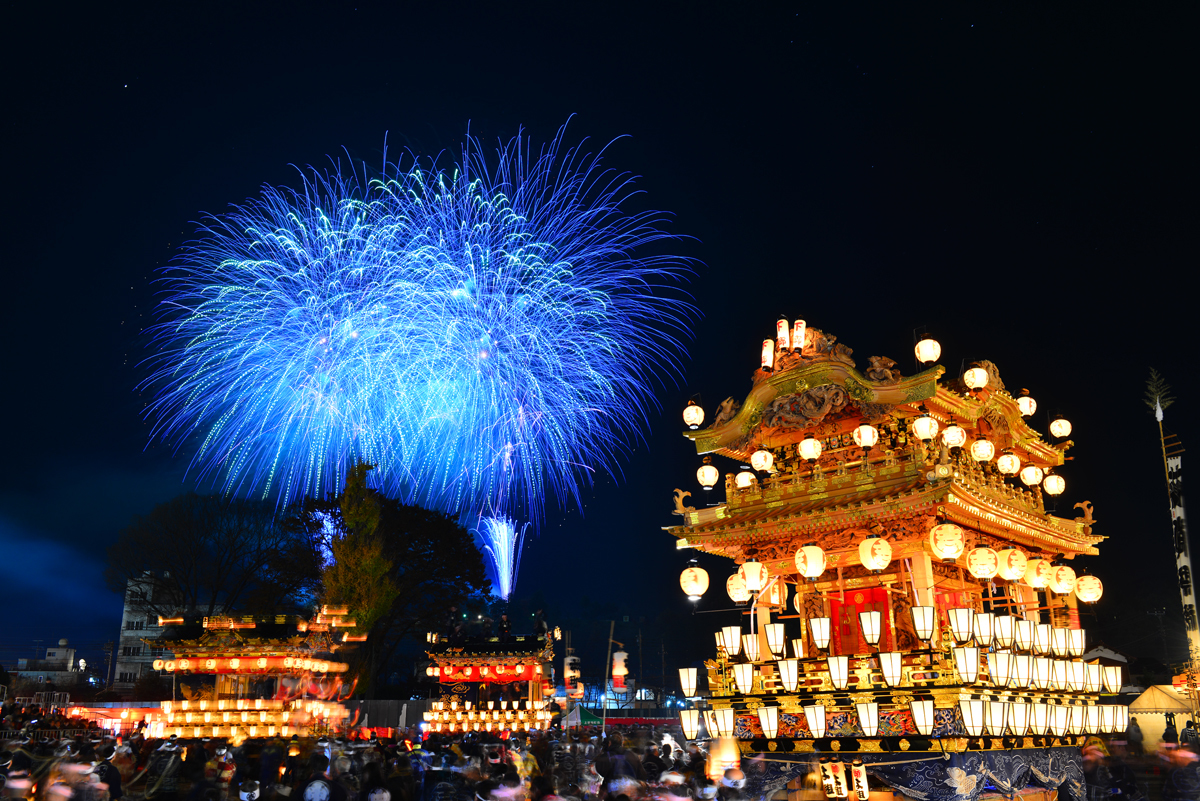
The Chichibu Yomatsuri is one of Japan’s most fascinating and celebrated night festivals, held annually in the city of Chichibu, in Saitama Prefecture. This event, which takes place on December 2 and 3, is particularly known for its grand parade of illuminated floats and striking fireworks that light up the winter sky. It is considered one of the three major float festivals in Japan, along with the Gion Matsuri in Kyoto and at the Takayama Matsuri in Gifu, and in 2016 it was recognized by UNESCO as an Intangible Cultural Heritage of Humanity.
The festival takes place during two intense days: December 2 is devoted to religious ceremonies and preparations, while the Dec. 3 is the main day of the event. The most spectacular part of the Chichibu Yomatsuri is the night parade of six floats (called yatai) and other floats decorated with lanterns, which travel through the streets of the city. Each float is carved and decorated with figures representing historical or mythological scenes and is pulled by groups of men in traditional dress.
The procession ends in the main square where the floats are swung and spun in an impressive choreography, accompanied by the sound of drums taiko and by the sound of wooden wheels screeching on the cobbled streets. The spectacle reaches its climax with the lighting of the lanterns that adorn the floats, transforming the entire scene into a magical and surreal vision.
Another distinctive element of the Chichibu Yomatsuri is the grandiose fireworks display that accompanies the parade. Although it is unusual to see fireworks in Japan during winter (as they are generally associated with summer festivals), the Chichibu sky lights up with an explosion of colors that lasts for about two hours, making the festival even more special and unique.
The origins of Chichibu Yomatsuri date back more than 300 years, and the festival is closely related to the Chichibu Shrine, located in the heart of the city. The festival is a form of prayer for abundant harvests and prosperity for the local community, and its continuity for centuries testifies to the importance of this tradition to the people of Chichibu. In addition to the procession, the festival includes religious ceremonies at the shrine and purification rites.
The Chichibu Yomatsuri is a very popular event and attracts thousands of visitors each year. To fully enjoy the show, it is advisable to arrive well in advance, especially if you want to get a good view of the floats or fireworks. Chichibu Station is well connected to Tokyo, making the festival easily accessible for anyone who wishes to attend.
In addition, the winter atmosphere makes the festival all the more fascinating: walking through lantern-lit streets, with the sound of drums filling the air, offers a unique experience, far removed from the hectic summer celebrations that often characterize other Japanese festivals.